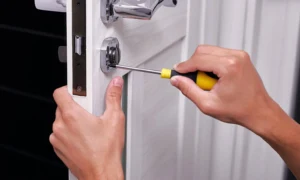Understanding Fire Extinguishers: Your First Line of Defense
Fire can be a devastating force, capable of destroying homes, businesses, and lives in a matter of minutes. But fear not, because there’s a simple yet powerful tool that can help you protect what matters most: the Fire Extinguishers
What Are Fire Extinguishers and How Do They Work?
At their core, fire extinguishers are portable devices designed to extinguish small fires before they escalate into uncontrollable infernos. They operate based on a simple principle: remove one of the elements essential for fire—heat, fuel, or oxygen—to halt the combustion process.
There are different types of fire extinguishers tailored to combat specific types of fires:
Understanding Different Types of Fire Extinguishers
- Water-Based Extinguishers: These are effective against fires fueled by ordinary combustibles like wood or paper. However, they should not be used on electrical fires or those involving flammable liquids.
- Carbon Dioxide (CO2) Extinguishers: Ideal for extinguishing electrical fires as they leave no residue and don’t conduct electricity. They work by displacing oxygen, effectively suffocating the fire.
- Dry Chemical Extinguishers: Versatile and effective on a variety of fires, including those involving flammable liquids, gases, and electrical equipment. They work by interrupting the chemical reaction of the fire.
- Foam Extinguishers: These are suitable for fires fueled by flammable liquids like gasoline or oil. The foam creates a barrier between the fuel and the oxygen, smothering the fire.
- Wet Chemical Extinguishers: Designed specifically for cooking oil and grease fires commonly found in kitchens. They work by cooling the flames and creating a barrier between the fuel and oxygen.
Where Should You Place Fire Extinguishers?
Now that you understand the types of fire extinguishers available, the next step is knowing where to place them for maximum effectiveness. Here are some key locations to consider:
Kitchen: Cooking-related fires are a leading cause of home fires. Placing a fire extinguisher in or near the kitchen can help you swiftly tackle any grease or oil fires.
Garage: Flammable materials often reside in garages, making them susceptible to fires. Keep a fire extinguisher handy to address any potential hazards.
Near Bedrooms: Fires can occur at any time, including while you’re asleep. Having a fire extinguisher near bedrooms ensures quick access in case of an emergency.
Workshop or Utility Room: Tools and equipment in these areas can pose fire risks. Install a fire extinguisher to mitigate potential hazards.
How to Use a Fire Extinguisher: Remember PASS
Knowing how to use a fire extinguisher is just as important as having one. Follow the PASS technique:
- Pull: Pull the pin to break the tamper seal.
- Aim: Aim the nozzle or hose at the base of the fire. This is where the fuel source is located.
- Squeeze: Squeeze the handle to discharge the extinguishing agent.
- Sweep: Sweep from side to side until the fire is completely extinguished. Continue monitoring the area in case of reignition.
The Importance of Regular Maintenance and Training
Owning a fire extinguisher isn’t enough; you must also ensure it’s in proper working condition and know how to use it effectively. Here’s what you can do:
Regular Inspections
Check the pressure gauge regularly to ensure it’s within the recommended range. Look for any signs of damage or corrosion and make sure the pin and tamper seal are intact.
Professional Maintenance
Schedule professional inspections and maintenance annually or as recommended by the manufacturer. A qualified technician can perform tests and ensure your extinguisher is ready for action when needed.

Training and Education
Provide training to yourself and your family members on how to use fire extinguishers safely and effectively. Practice using them through simulated scenarios to build confidence and muscle memory.
Conclusion
Fire extinguishers are invaluable tools that can save lives and property when used correctly. By understanding the different types of extinguishers, knowing where to place them, and how to use them, you can enhance your preparedness for potential fire emergencies. Remember, in the event of a fire, your safety is the top priority. If a fire is too large or spreading rapidly, evacuate immediately and call emergency services.
NOTE : For more insightful articles related to this topic, feel free to visit timesofrising









































